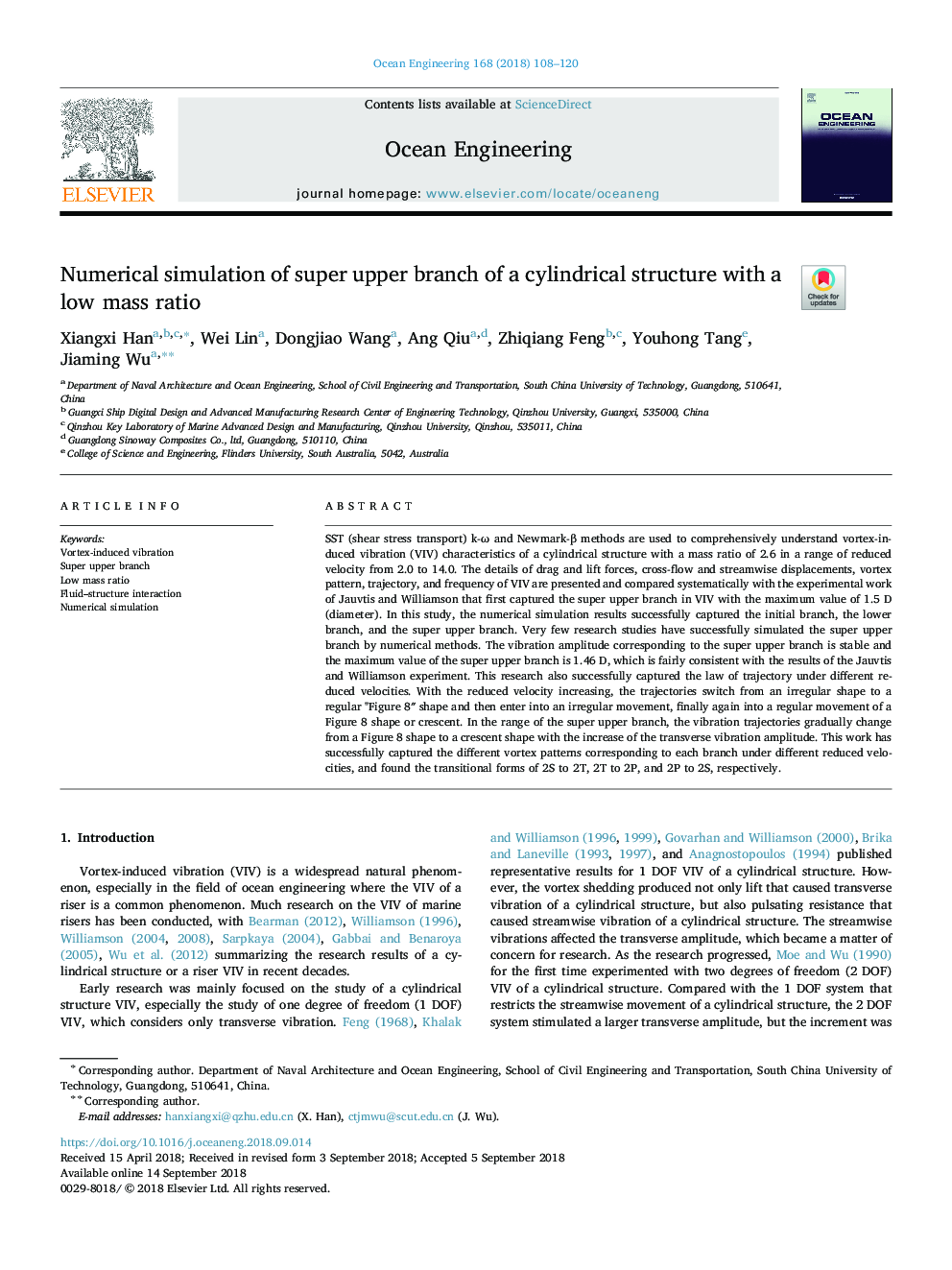| Article ID | Journal | Published Year | Pages | File Type |
|---|---|---|---|---|
| 10156194 | Ocean Engineering | 2018 | 13 Pages |
Abstract
SST (shear stress transport) k-Ï and Newmark-β methods are used to comprehensively understand vortex-induced vibration (VIV) characteristics of a cylindrical structure with a mass ratio of 2.6 in a range of reduced velocity from 2.0 to 14.0. The details of drag and lift forces, cross-flow and streamwise displacements, vortex pattern, trajectory, and frequency of VIV are presented and compared systematically with the experimental work of Jauvtis and Williamson that first captured the super upper branch in VIV with the maximum value of 1.5 D (diameter). In this study, the numerical simulation results successfully captured the initial branch, the lower branch, and the super upper branch. Very few research studies have successfully simulated the super upper branch by numerical methods. The vibration amplitude corresponding to the super upper branch is stable and the maximum value of the super upper branch is 1.46 D, which is fairly consistent with the results of the Jauvtis and Williamson experiment. This research also successfully captured the law of trajectory under different reduced velocities. With the reduced velocity increasing, the trajectories switch from an irregular shape to a regular "Figure 8â³ shape and then enter into an irregular movement, finally again into a regular movement of a Figure 8 shape or crescent. In the range of the super upper branch, the vibration trajectories gradually change from a Figure 8 shape to a crescent shape with the increase of the transverse vibration amplitude. This work has successfully captured the different vortex patterns corresponding to each branch under different reduced velocities, and found the transitional forms of 2S to 2T, 2T to 2P, and 2P to 2S, respectively.
Related Topics
Physical Sciences and Engineering
Engineering
Ocean Engineering
Authors
Xiangxi Han, Wei Lin, Dongjiao Wang, Ang Qiu, Zhiqiang Feng, Youhong Tang, Jiaming Wu,
